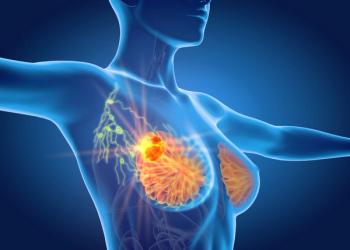
Oncology NEWS International
- Oncology NEWS International Vol 9 No 8
- Volume 9
- Issue 8
Education Boosts Pain Control in a Cancer Hospital
NEW ORLEANS-An educational intervention for both patients and health care professionals led to significant improvements in pain control at the RUSH Cancer Institute of RUSH-Presbyterian-St. Luke’s Medical Center, Chicago. David Frame, PharmD, reported the results at the 36th Annual Meeting of the American Society of Clinical Oncology (ASCO).
NEW ORLEANSAn educational intervention for both patients and health care professionals led to significant improvements in pain control at the RUSH Cancer Institute of RUSH-Presbyterian-St. Lukes Medical Center, Chicago. David Frame, PharmD, reported the results at the 36th Annual Meeting of the American Society of Clinical Oncology (ASCO).
During a 2-month baseline period, all patients admitted to the oncology unit were interviewed by a team of pharmacists regarding their pain (rated on a scale of 0 to 10) and their satisfaction with their pain control during the first 3 days of their stay.
During this same period, nurses, pharmacists, oncologists, and internal medicine residents completed knowledge and attitude surveys regarding pain and its treatment.
In the second phase of the study (quality improvement intervention), education regarding pain was provided to the health care professionals through the use of inservices, decision trees, reference cards on pain assessment and treatment, and adding pain scores as a fifth vital sign to the patient flow sheet.
Patients were educated about pain control through posters, handouts, and verbal education.
After the intervention period, patients and health care professionals were again queried as in the baseline period.
The results showed that after the intervention:
Nurses documentation of pain in the patients charts increased significantly, and physicians documentation improved.
Mean patient pain scores decreased significantly by day 3 of hospital admission (see Figure).
Fewer patients had moderate-to-severe pain by day 3 of hospital admission.
Patient satisfaction with their pain relief increased significantly. After the intervention, 82% said they were very satisfied with their pain relief, compared with 37% before the intervention.
Use of opioids in pain treatment increased.
Patients attitudes toward pain medications improved. They reported decreased fear of addiction and decreased fear of tolerance, and patients were more likely to ask for pain medication.
These results suggest that implementing efforts to increase awareness of pain management to health care providers and patients results in a significant improvement in pain control, Dr. Frame said.
However, Dr. Frame pointed out, the overall pain scores still reflect that continued intervention is necessary. Based on the study results, the center has instituted hospital-wide efforts to continue to improve pain control.
Articles in this issue
over 25 years ago
Scientists Identify Gene Mutations in Multiple Myelomaover 25 years ago
Single-Agent Herceptin Active in Metastatic Breast Cancerover 25 years ago
Brain Metastases Respond to Paclitaxel, Carboplatin, and Brain RTNewsletter
Stay up to date on recent advances in the multidisciplinary approach to cancer.
















































































